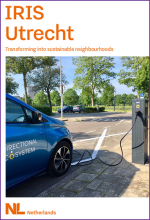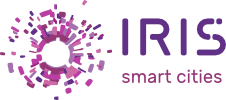
The city of Utrecht is located in the middle of the Netherlands. In the Kanaleneiland-Zuid district of the city, an existing neighbourhood is being transformed into a more sustainable, future-proof district. Discover more with this overview of how the municipality, Utrecht Sustainability Institute (USI), social housing cooperation Bo-Ex and partners from varied backgrounds are collaborating to make it happen with this factsheet.
The Municipality of Utrecht has big ambitions in sustainability, resilience, circular economy and mobility. It is the Municipality’s task to provide sustainable and liveable city districts for residents. In 2017, Utrecht joined the IRIS Smart Cities programme with the ambition to transform the Kanaleneiland-Zuid district into a more sustainable neighbourhood. IRIS is funded under the European Union’s Horizon 2020 research and innovation programme with the aim to research, develop and test smart city solutions, with the ultimate goal to spread these solutions throughout Europe.
The Kanaleneiland-Zuid district is a low-income, multicultural city district that has lots of apartment buildings that will be refurbished into sustainable homes. The Municipality of Utrecht together with Utrecht Sustainability Institute decided to transform this area into a sustainable, future- proof city district. They decided to connect this challenge to the IRIS programme, so that they could exchange experiences and knowledge with other European cities that face similar challenges and are seeking similar solutions.
Projects in Utrecht include:
- the renovation of twelve large apartment buildings (644 social housing apartments in total) to (nearly) energy-neutral buildings;
- an increase in electric sharable cars and introducing electric busses that run on locally generated energy;
- the installation of smart metering cabinets in homes so that less energy is consumed;
- the development of an ICT platform with open data, on which data exchange takes place to support the project;
- the organisation of co-creation sessions with residents and involving schools and pupils in making the neighbourhood more sustainable
Download the complete fact sheet
21 Aug 2020

